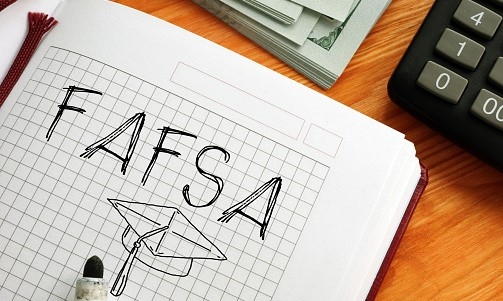You have /5 articles left.
Sign up for a free account or log in.

Andrii Dodonov/Getty Images
Changes made in federal financial aid policy five years ago are having a positive impact on the awarding of aid, according to a survey released today by the National Association of Student Financial Aid Administrators.
The two changes, enacted under President Obama, both concern the Free Application for Federal Student Aid. One change, known as “prior prior year,” allows students to apply for aid based on the income they reported two years earlier, rather than in the immediate previous year. Relatively few people who have so little money as to qualify for federal aid are suddenly ineligible the next year. Early FAFSA also allowed people to submit their applications earlier.
Before the changes, students had to wait until January to apply for aid. Under the changes, people can apply for aid as early as October for the next year. Low-income students in particular benefit from earlier receipt of the financial aid information.
Beginning in the 2017–18 year, when the earlier date was possible, people have wondered about its impact.
According to the NASFAA survey, colleges are responding. Forty-four percent of institutions said they did or will send their first 2022–23 award year aid offers to first-time undergraduate students before February. By the end of February, 60 percent of institutions will have sent first-time undergraduates a financial aid offer.
NASFAA president and CEO Justin Draeger said, “Knowing months sooner what to expect financially also levels the playing field for lower-income students who might otherwise be left scrambling to make decisions on college attendance at the last minute.”
Here are the results of the survey, in which 427 colleges replied, of which 208 responded to this question:
Nonprofit Institutions: When did you, or will you, send your first aid offers to first-time, nontransfer students?
| October | 3% |
| November | 18% |
| December | 33% |
| January | 15% |
| February | 8% |
| March | 10% |
| April | 2% |
| May–July | 0% |
| My institution has multiple start dates and aid notification dates | 5% |
| Other | 4% |
Other FAFSA News
Other news on the FAFSA is not as encouraging.
The California Student Aid Commission on Thursday reported a year-over-year decline in financial aid application completions among high school and undocumented students with just three weeks left before a major financial aid deadline, March 2. In response to this decline, the California Community Colleges Chancellor’s Office is urging current and prospective students to submit their FAFSA or California Dream Act Application (CADAA) before March 2 to maximize their possible award amount.
FAFSA completions among graduating high school seniors are down by 16 percent compared to this same time last year. CADAA completions, which allows eligible undocumented students to apply for the same state-based financial aid opportunities available to others, are down by 19 percent year over year.
And Bill DeBaun, director of data and evaluation at the National College Attainment Network, reported on Twitter that seniors in the Class of 2022 are three percentage points behind the Class of 2020 in completing their FAFSA.
“Just a very stubborn trend line for the class of 2022,” he wrote.








